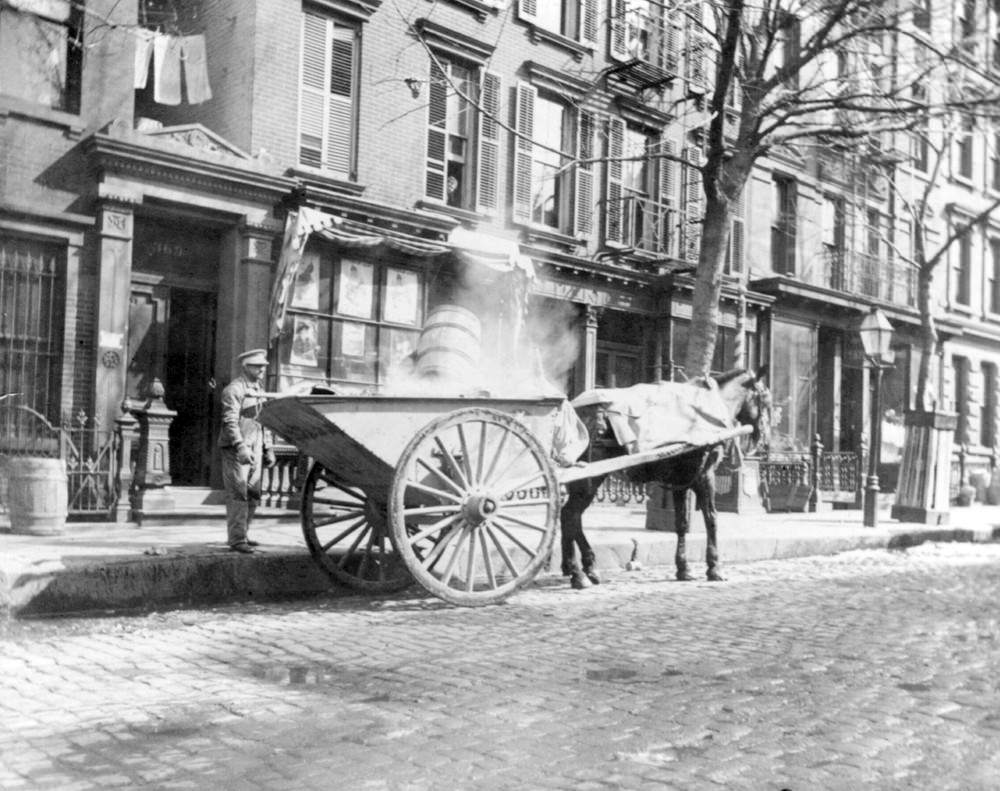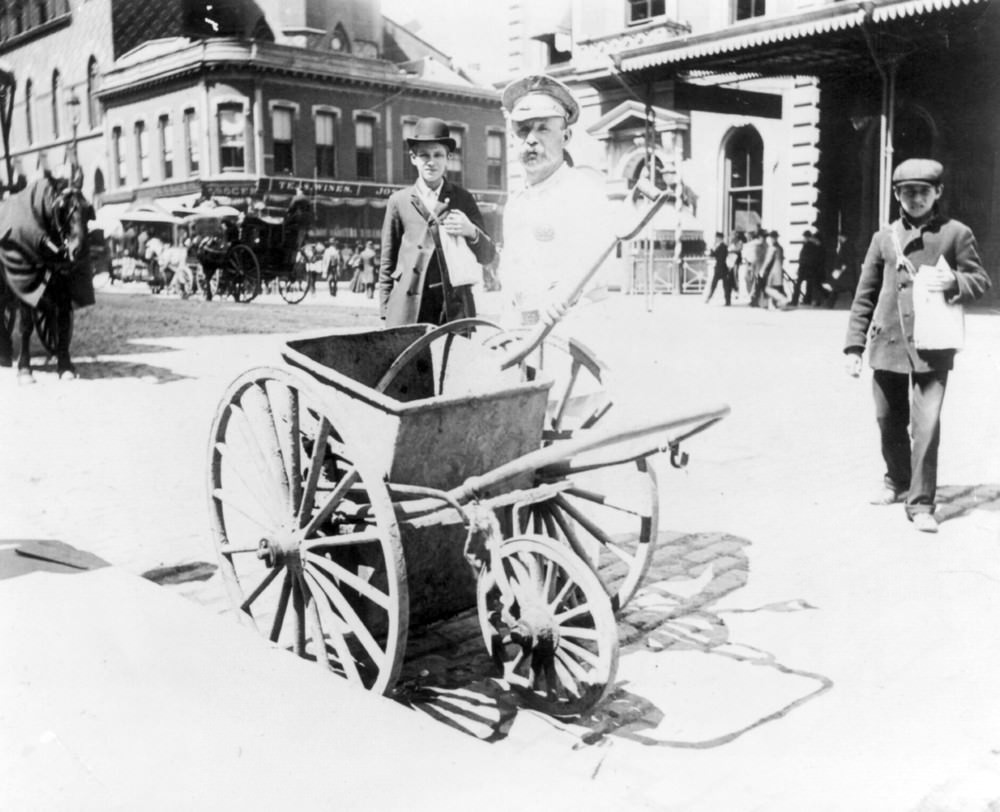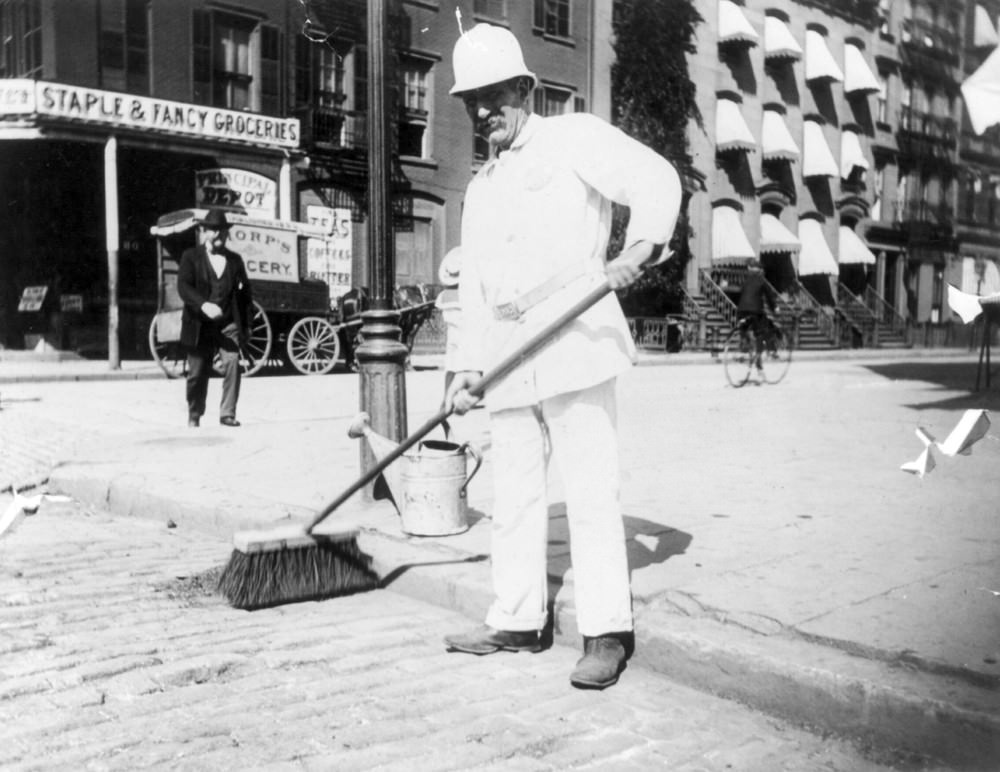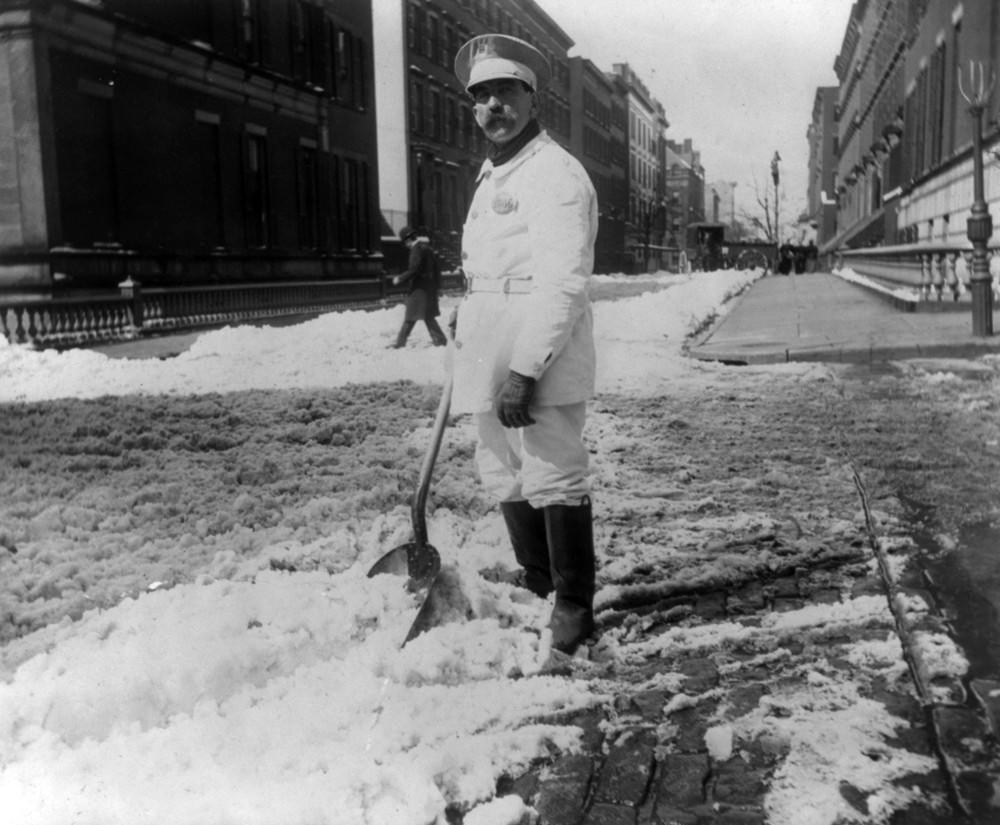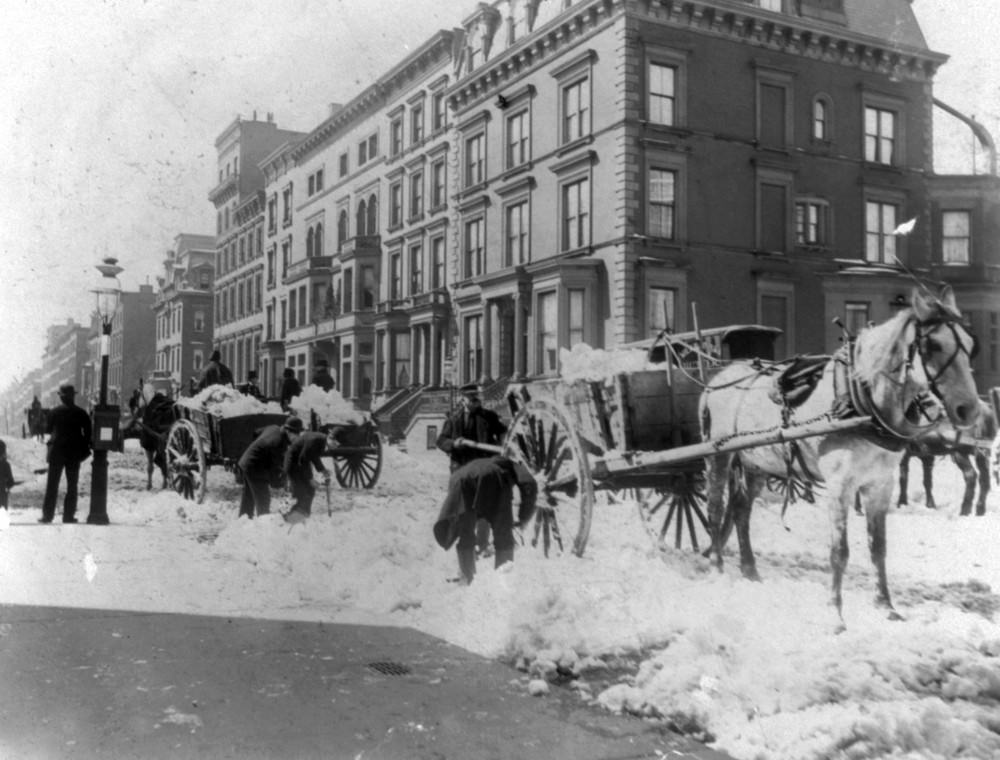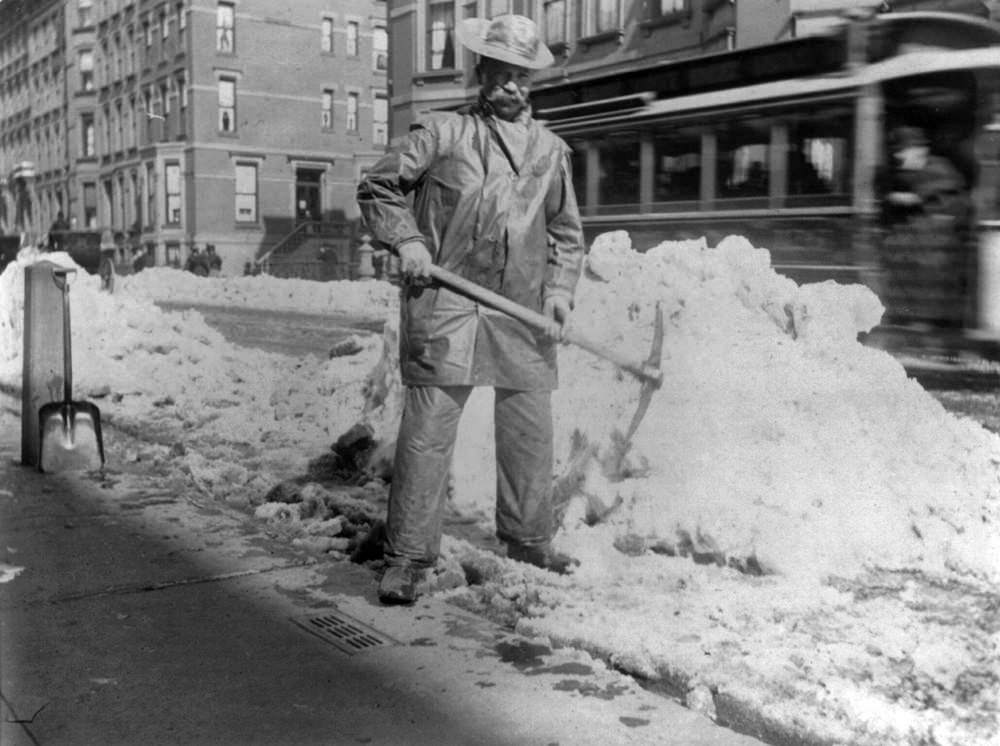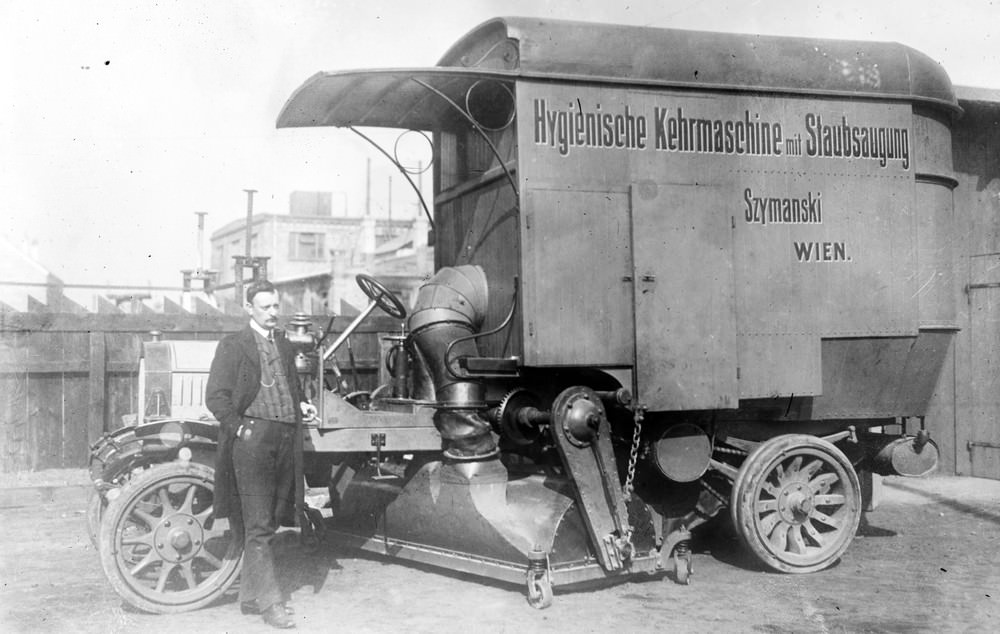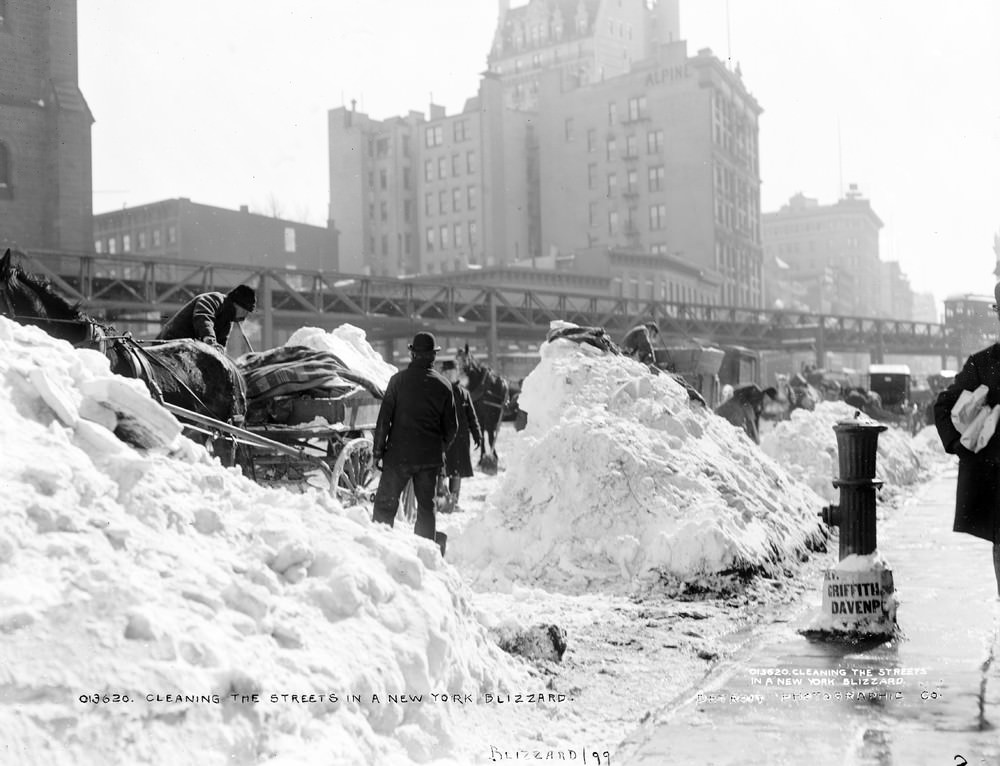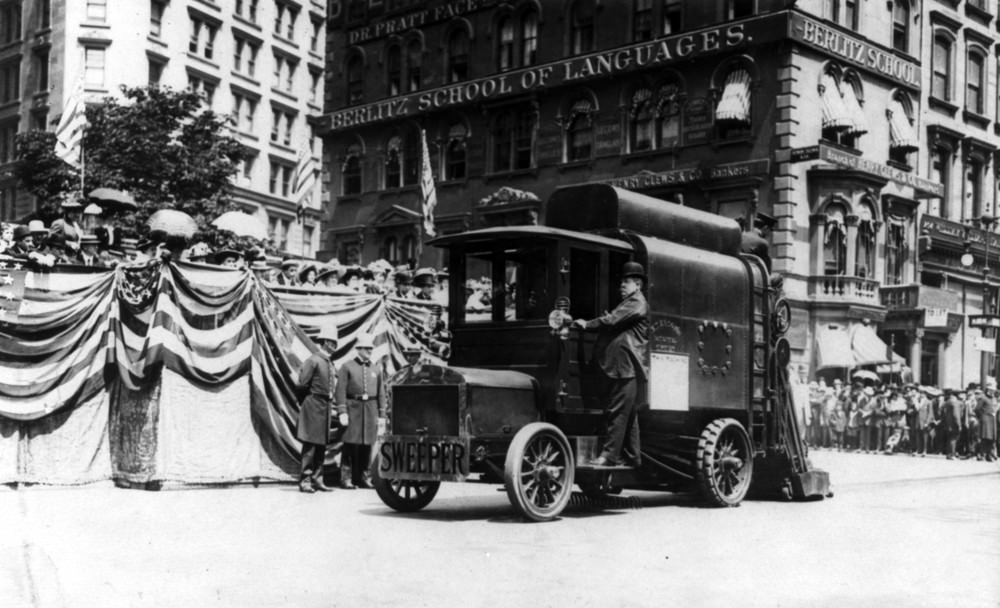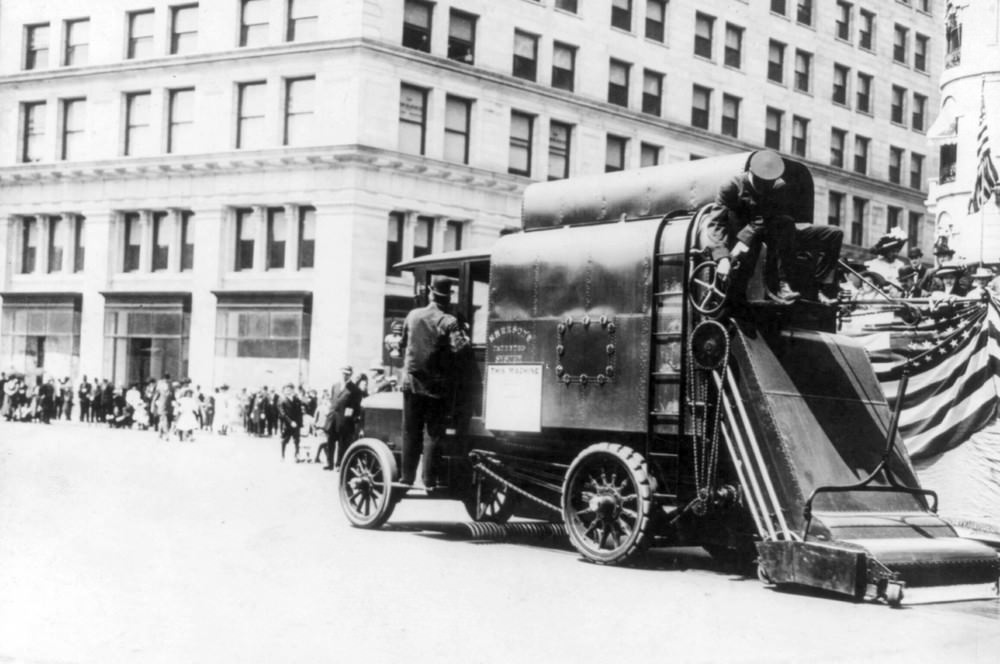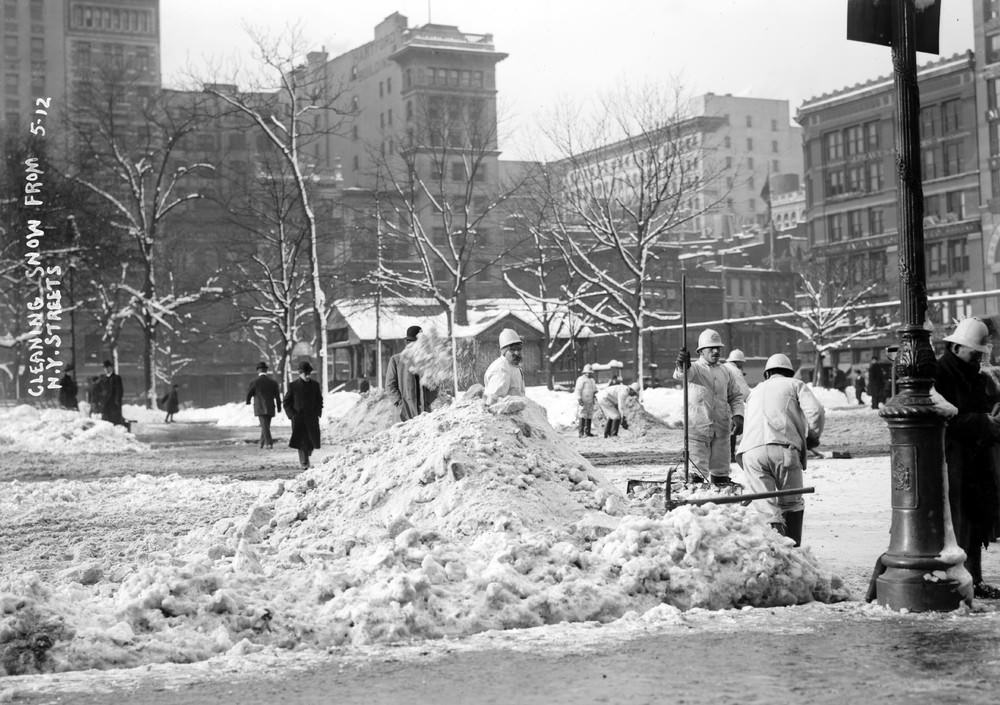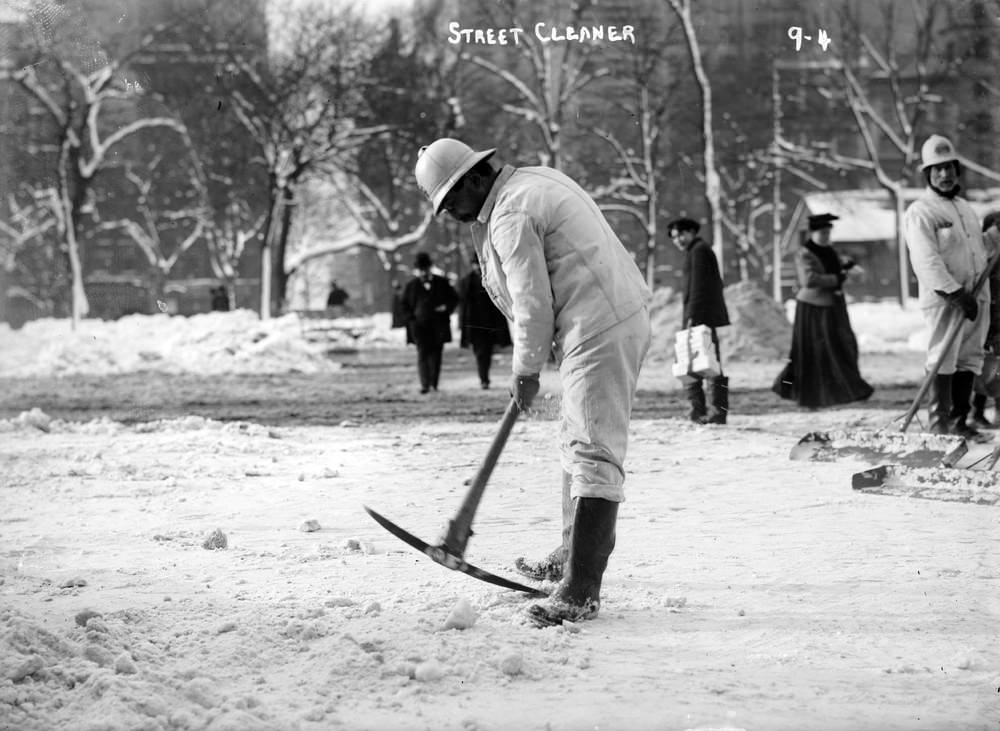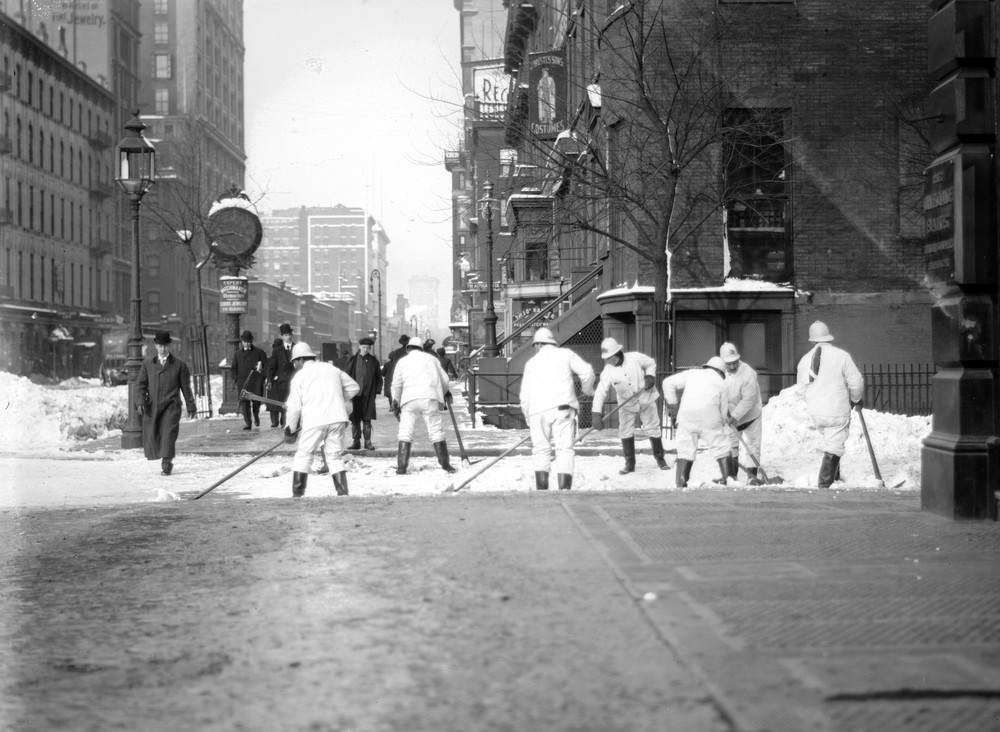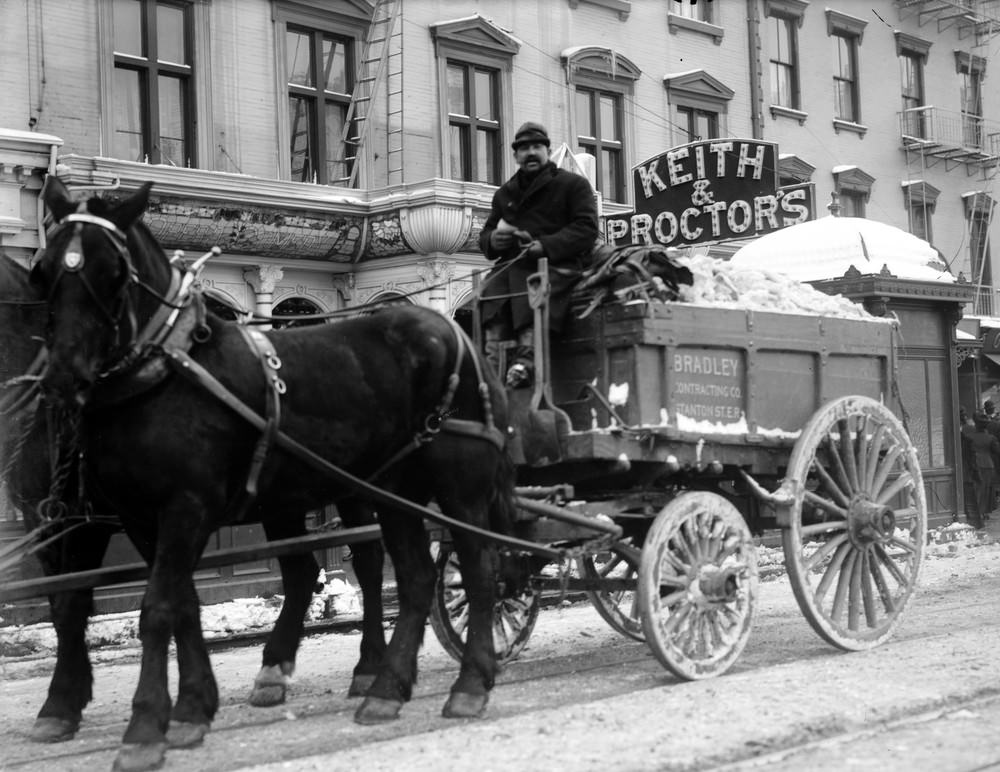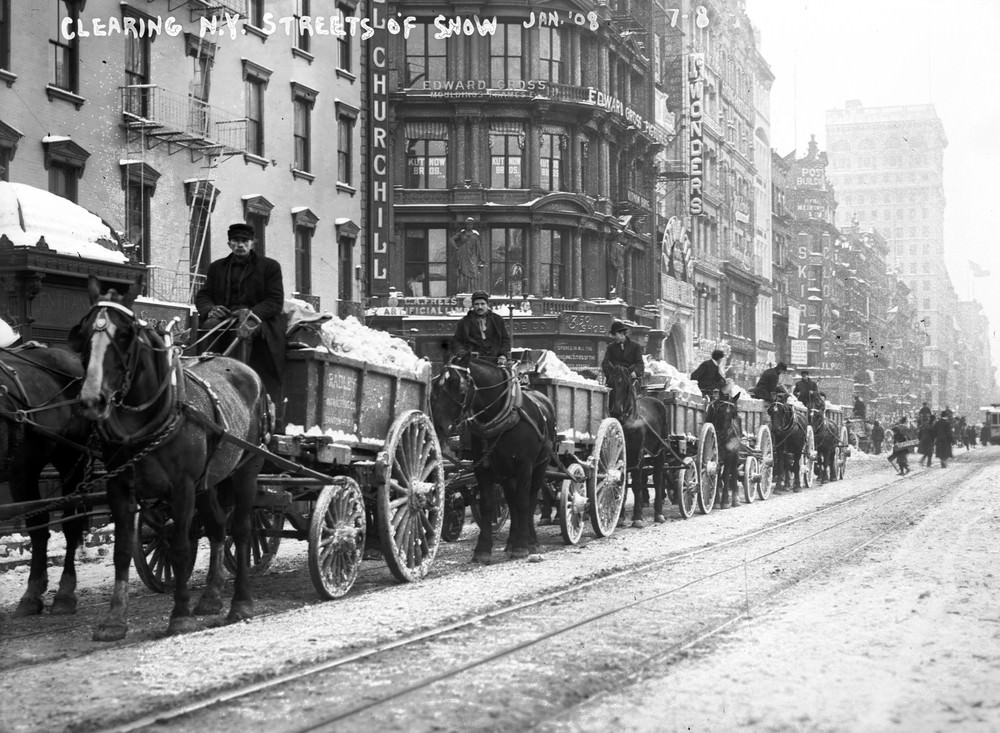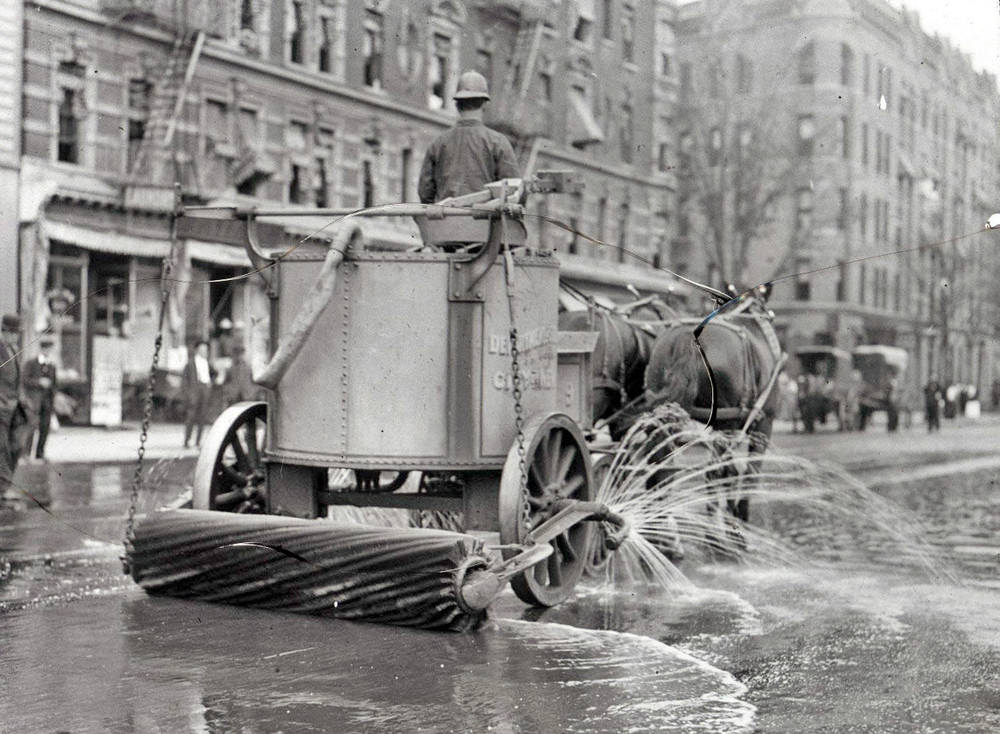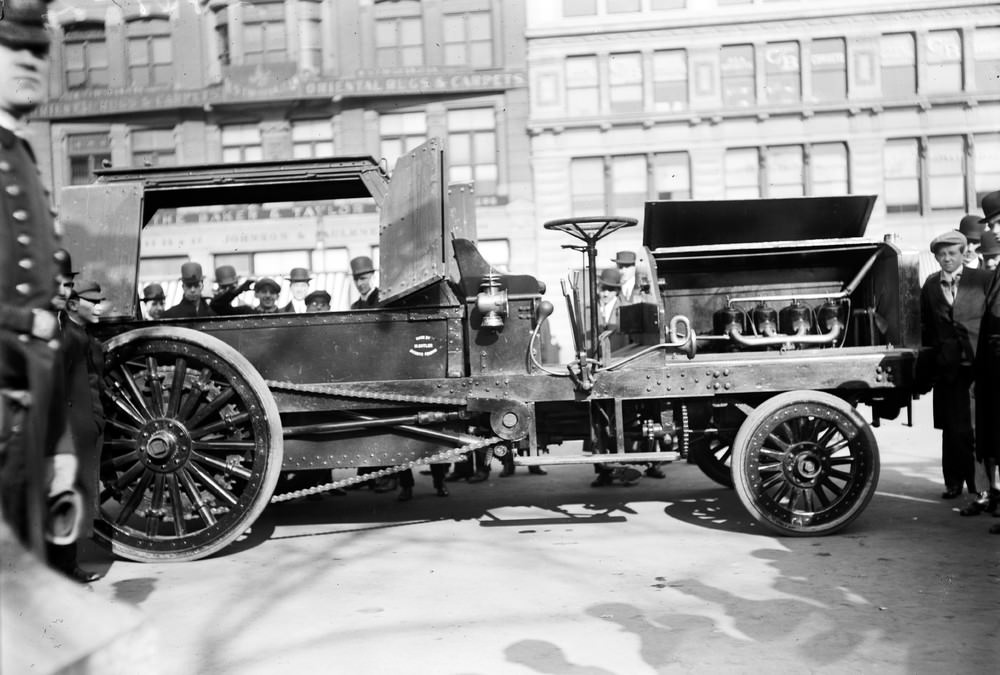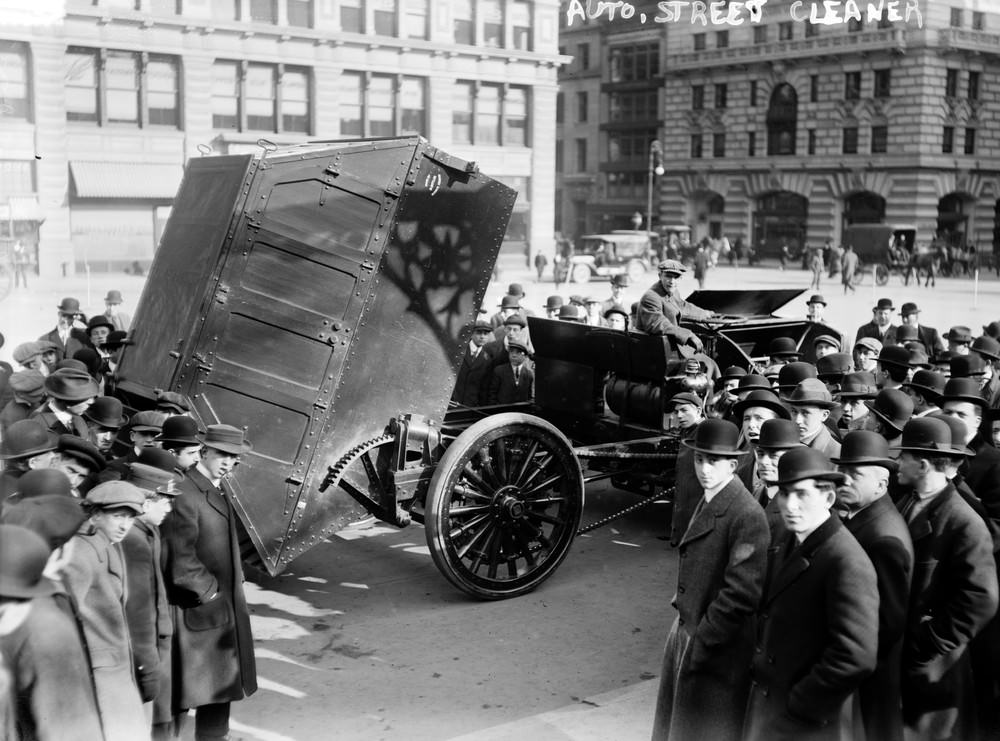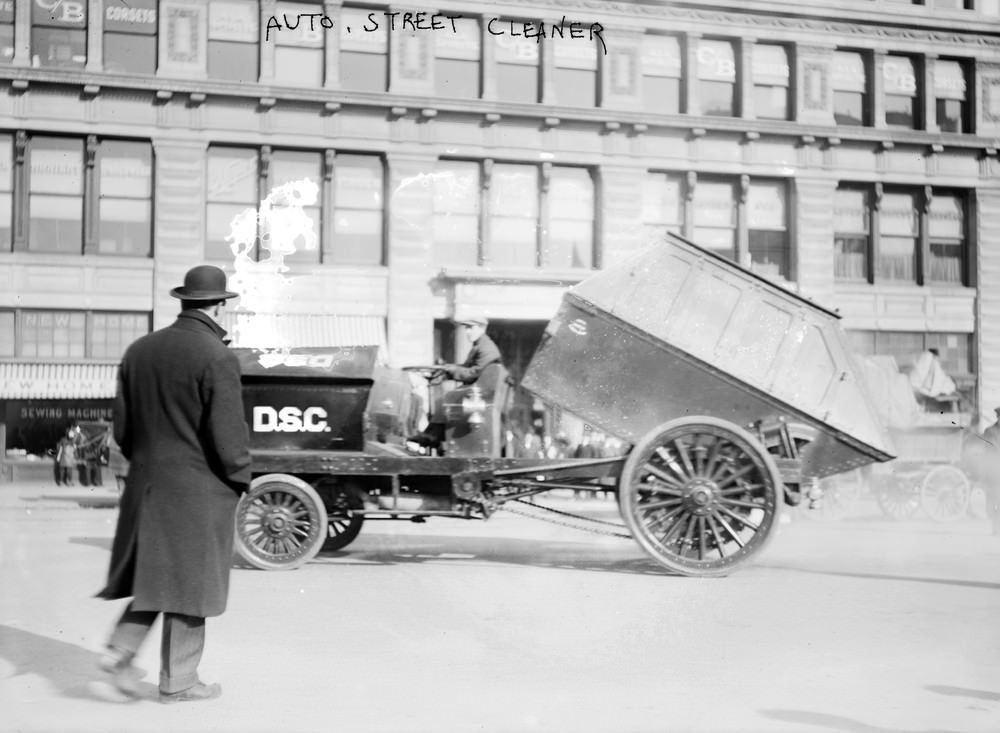Keeping the bustling streets of New York City clean has always presented a formidable challenge. Looking back at the late 1800s and the first half of the 1900s, the task was immense, relying on evolving methods that combined strenuous manual labor with early forms of specialized equipment, long before the advanced sanitation technology available today.
Late 1800s: Brooms, Shovels, and Horse Power
In the final decades of the 19th century, New York City grappled with notoriously dirty streets. The dominant mode of transportation was the horse-drawn carriage, wagon, and omnibus. This meant vast amounts of horse manure accumulated daily, mixing with mud, garbage tossed from homes and businesses, coal ash from heating stoves, and general litter. Cleaning this mixture from cobblestone or sometimes unpaved streets primarily fell to large crews of manual laborers. These street sweepers typically used simple, sturdy hand brooms, often crafted from birch or other twigs, along with basic shovels and sometimes metal scrapers to dislodge packed grime. Their job involved sweeping the debris into piles along the curbs or in designated spots. Collection crews would then follow, laboriously shoveling these piles into horse-drawn carts to be hauled away.
Read more
The “White Wings” Era Reforms
Conditions began to improve significantly around 1895 with the appointment of Colonel George E. Waring Jr. as the Commissioner of the Department of Street Cleaning. Waring initiated sweeping reforms aimed at professionalizing the sanitation workforce and making cleaning more systematic and effective. Most visibly, he outfitted his street sweepers in distinctive white duck uniforms, which quickly earned them the nickname the “White Wings.” These uniforms were intended to boost worker morale and signal a new era of civic cleanliness and efficiency. Waring implemented regular cleaning schedules, divided the city into manageable districts, and insisted on the separation of household waste into distinct categories (food waste, ash, rubbish) to make disposal more organized. Early methods of washing streets sometimes involved horse-drawn sprinkler carts that sprayed water to help loosen dirt and wash some debris towards the gutters.
Entering the 20th Century: Motorization Begins
The dawn of the 20th century brought the gradual introduction of motorized vehicles into city services, including street cleaning. While horse-drawn equipment remained in use for some time, early motorized machines started to appear. Mechanical street sweepers, typically mounted on truck chassis, used large rotating brushes underneath to gather street debris, often sweeping it towards the curb for later collection or sometimes into an onboard container called a hopper. Motorized ‘street flushers’ also represented an advancement. These trucks carried water tanks and used pumps to spray water onto the street surface at higher pressures than the older sprinkler carts, allowing for a more thorough washing action. Despite the arrival of these machines, manual street sweeping with brooms and pushcarts remained a crucial part of the cleaning process, especially for detailed work around obstacles or along curbs.
Developing Equipment (Mid-1900s)
Through the 1920s, 30s, 40s, and 50s, technology continued to evolve. Trucks used for collecting garbage and street refuse became larger and more specialized. Eventually, trucks with ‘compaction mechanisms’ were developed, allowing crews to collect significantly more waste per load. Street sweeping machines became more powerful and efficient, often incorporating water sprays to control dust. Flushing trucks improved their capacity and nozzle designs for better cleaning. However, the individual sanitation worker on foot, equipped with a wide push broom and a wheeled cart or bin, continued to be an essential part of the system, handling localized cleanups, emptying sidewalk litter baskets (which became increasingly common), and ensuring areas inaccessible to large vehicles were maintained.


